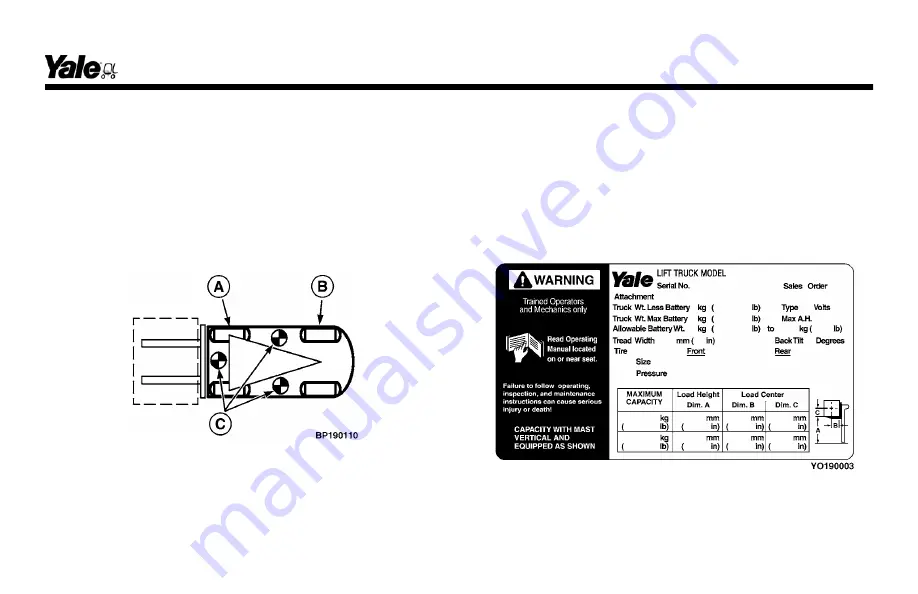
operating on uneven surfaces or on an incline. These fac-
tors must be considered when traveling with an unloaded
truck, as well, because
an unloaded truck will tip over to
the side easier
than a loaded truck with its load in the low-
ered position.
In order for the lift truck to be stable (not tip over forward or
to the side), the CG must stay within the area of the lift
truck represented by a triangle drawn between the drive
axle and the pivot of the steering axle.
A.
DRIVE AXLE
B.
STEERING AXLE
C.
TRUCK WILL TIP OVER
If the CG moves forward of the drive axle, the lift truck will
tip forward. If the CG moves outside of the line represented
by the lines drawn between the drive wheels and the steer-
ing axle pivot, the lift truck will tip to that side.
Capacity (Weight and Load Center)
The capacity of the lift truck is shown on the Nameplate.
The capacity is listed in terms of weight and load center.
The weight is specified in kilograms and pounds. The load
center is specified in millimeters and inches. The capacity
is the maximum load that the lift truck can handle, with the
mast vertical, for the load condition shown on the Name-
plate.
The load center of a load is determined by the location of
its center of gravity. The load center is measured from the
front face of the forks, or the load face of an attachment, to
Operating Procedures
65
Summary of Contents for VERACITOR GCC030VX
Page 24: ...Figure 6 Display Switch Cluster Right Side Display Inputs Model Description 22...
Page 40: ...Figure 8 Operator Controls Sheet 2 of 2 Model Description 38...
Page 83: ...Figure 13 Seat Adjustment Full Suspension Operating Procedures 81...
Page 172: ...Figure 43 LPG Tank and Bracket Maintenance 170...

































